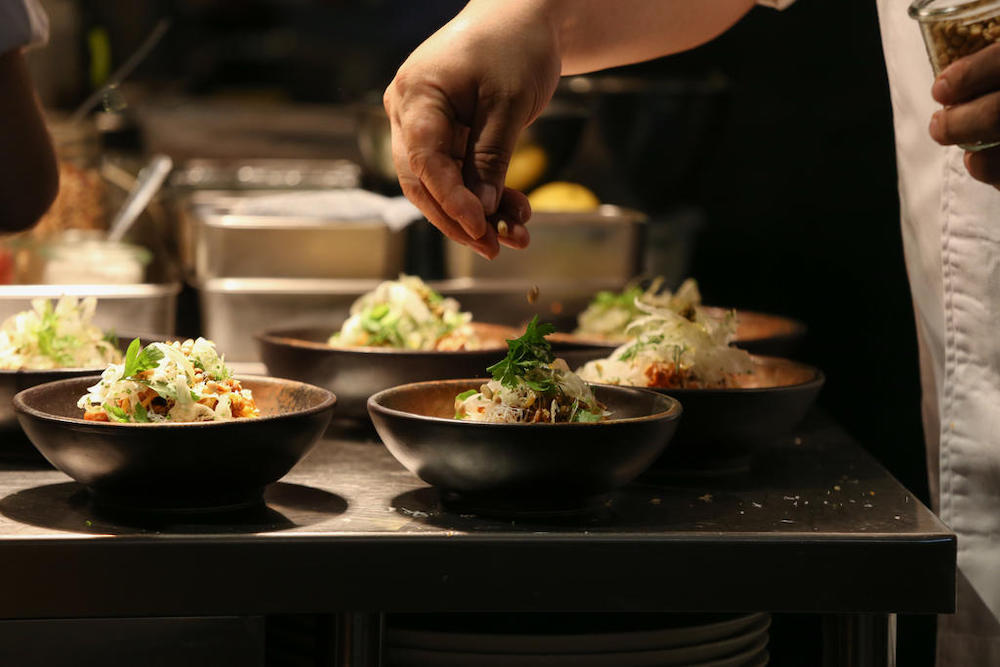SINGAPORE, Nov 28 — It is not exactly dumpster diving, but patrons at Plentyfull restaurant in Millenia Walk mall will be able to do their part to help reduce food wastage here when they order any of its three special dishes — tuna pasta, rice pudding, granola bars — from next month.
These dishes have been specially created by the restaurant’s chef from ingredients that it retrieved from The Food Bank Singapore, an organisation that redistributes food donations to the needy through charitable groups.
The initiative is part of the One-Dish@A-time campaign by The Food Bank and Plentyfull, to encourage people to consume meals made from ingredients that have been discarded not because they have turned stale, but because they are “ugly”.
Plentyfull’s founder Claudia Sondakh-Kwee, 41, and its chef Victor Loy, 33, were inspired to start this after reading about a similar movement by Italian chef Massimo Bottura, who in 2016 started creating quality dishes using ugly produce.
Ms Sondakh-Kwee, who opened Plentyfull in 2016, said: “It started when I was interning at a kitchen years ago… I was training under a chef and he said something that resonated with me: Fill your fridge to cook, and not to throw away.
“That made me think a lot more about the issue of food wastage.”
In May this year, they approached The Food Bank to work on this campaign in Singapore, and the restaurant launched its creations yesterday.

The tuna pasta is priced at S$22 (RM67), the rice pudding at S$6, and the granola bar costs S$5.
Of the sales proceeds, 15 per cent will go towards The Food Bank’s operational costs, while the eatery is taking part in this campaign on a not-for-profit basis.
The Food Bank’s management associate Jessie Tan said that the organisation is in discussions with five more restaurants to come on board the initiative, and the aim is to have 10 eateries taking part next year.
The Food Bank will move from its Pasir Panjang premises to Pandan Loop next year, which will allow it to incorporate a new central kitchen where staff members and volunteers can repackage donated food into bento boxes for easier redistribution to the needy.
While there may be concerns about food safety, Ms Tan said that the organisation accepts non-perishables that have at least one month remaining on its expiry date, while perishables such as vegetables and fruits are usually distributed the day it receives them.
“So, whatever the restaurants are collecting from us is definitely going to be before the expiry date,” she added.
Ms Sondakh-Kwee said that Plentyfull’s crew would go to The Food Bank’s warehouse, take these products and produce that would have been thrown away, “and create something really amazing with it”.
“(We just use) time and effort to take really simple ingredients or unexpected ingredients, and make something delicious.”

Some of the ingredients from The Food Bank used in Plentyfull’s three dishes are: Canned tuna, bottled tomato-basil pasta sauce, organic pasta, capers, chia seeds, canned pineapples, quinoa, Milo powder, soda biscuits, cornflakes and others.
When Mr Loy and two staff members went to The Food Bank’s warehouse less than a week ago, he decided that they would collect only non-staple food items, and leave items such as vegetables, oil, salt, and sugar for needy families.
They also picked items such as quinoa, which was not as commonly used for cooking at home.
“We shouldn’t be snatching away from those people... We should use our expertise (as chefs) to use (ingredients that) other people don’t know how to cook with,” he added.
While the initiative helps cut back on food wastage, it is not without its challenges. As the ingredients are not fresh or of premium quality, Mr Loy has to improve the taste of the dishes during the cooking process.
However, the chef welcomes the opportunity to get creative. He said: “The smell of the can is sometimes infused in the product itself (but) we can improve (the taste) with other vegetables.”
In the case of canned tuna, the fish had to be stewed for four hours in order to fully remove the canned flavour, and fried shallots were added to make it “more appealing to a local clientele”, Mr Loy said.
While the collaboration with The Food Bank will last a month, Plentyfull is already looking to extend it beyond this testing phase. If the ingredients run out before the month is up, its chefs would have to head back to the organisation to restock.
By then, they may face yet another tantalising challenge: As they have no control over the type of food items donated to the organisation, the chefs may have to pick a new set of ingredients, and create new dishes.
Ms Sondakh-Kwee said: “The fun thing is, it really allows the chefs to be creative. It’s a treasure hunt. When you go to The Food Bank, you really don’t know what you’re going to get.” — TODAY






















